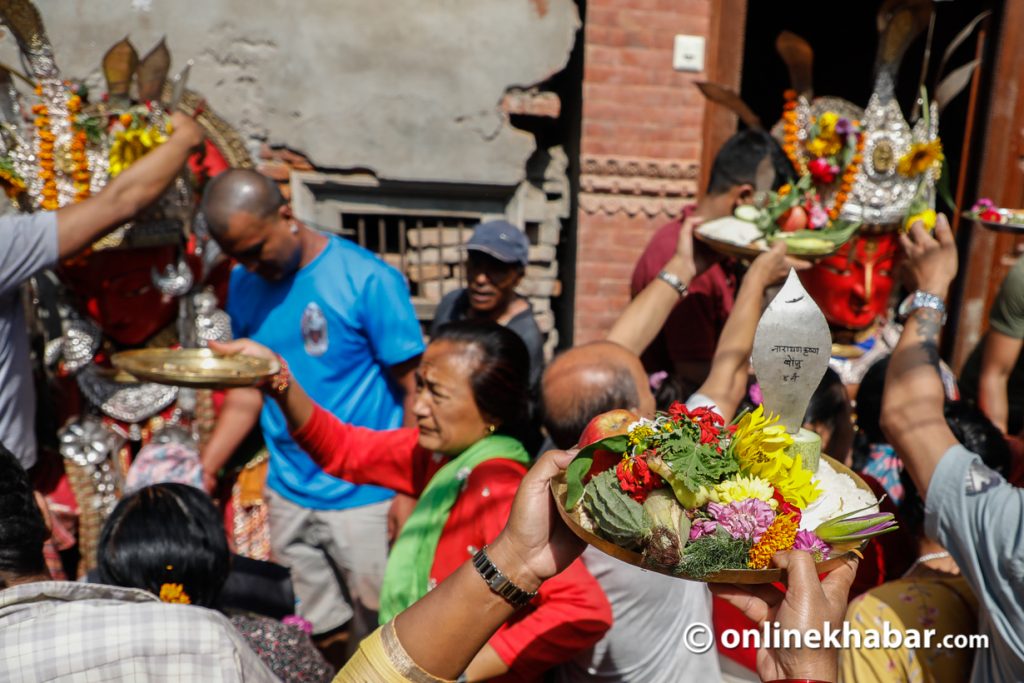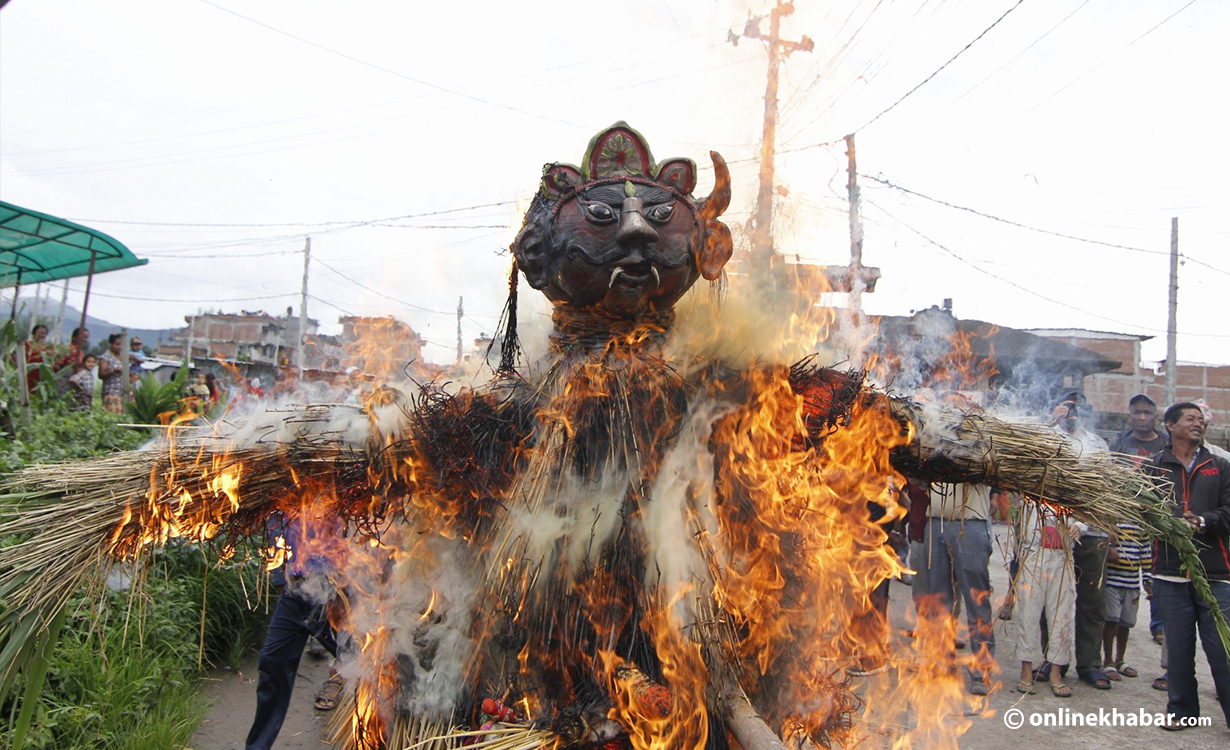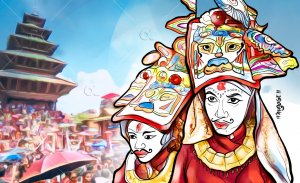
As Hindu men from Brahmin and Kshetriya communities across the country get busy in their Janai Purnima rituals, some Newars of Kathmandu, in addition, prepare to worship and feed frogs as a part of their annual festival, on the full moon day of Shrawan every year.
For many, the festival of worshipping frogs sounds bizarre, but the native inhabitants of Kathmandu have been following the ritual for many decades, and even centuries, though there is not any written document about why it is celebrated.
The frogs’ day

The worship of frogs is a part of the rituals they are required to perform in the month of Gun:laa. However, not much has been written about the traditions and those written do not give us much information about its beginning.
Perhaps, the only written evidence about this tradition can be found in records kept at Malati Chowk of Bhaktapur that dates back to Nepal Sambat 818 (1689 AD), where it is stated that the people back then offered panchamrit (five elements of elixir/nectar), flowers, kwati, and beans to the frogs.
However, these days, people are also known to offer rice to the frogs even though the frogs do not eat rice by nature. The tradition has been as named ‘byan: jaa nakegu’ (meaning ‘to feed rice to frogs’). But the question, why feed rice to frogs has to no answer. Perhaps, it was because rice was the most significant harvest for farmers in Kathmandu as well as the staple food for them, so that was what they offered.
As to why we celebrate and worships frogs, there are some popular stories that provide us with the reasons. According to Prem Hira Tuladhar, Nepal Bhasa professor at Padma Kanya Campus, one such version suggests that a frog once killed Ghantakarna, a three-legged demon, in Kathmandu.
The frog, in another version of the same story, has been believed to be a ‘tantric’ one who saves people from Ghantakarna’s violence. But, none of these stories actually provide details on how the small amphibian killed the giant monster, since when the tradition of feeding and worshipping frogs started, and who the initiators were, she adds.
Given the lack of evidence, however, some scholars of the Newar community have started to question this idea of worshipping frogs. Well-known writer Rukmani Shrestha also presents the same arguments in her article in Newari newspaper Lahana Weekly on July 21 this year.
Moreover, there are some opposing stories within the Newari tradition. In one of these stories, the demon of Ghantakarna has been renamed Sambar Bhairav, one of Lord Shiva’s warriors. There, Ghantakarna has been defined as a protector of the Kathmandu valley, who saves the inhabitants from tantric influences. This story has also been reiterated by Shrestha in her article.
Meanwhile, every year on Chahre (the 14th day of the waning moon of Shrawan), just before the Gun:laa festival commences, Newars put up Ghantakarna’s effigies at every junction or crossroads to remember him. People perform rituals like offering him food. They also put up protective tantric charms in their houses, above the doors, to protect themselves from evil.

It is believed that Ghantakarna had died this day, and people perform all the funeral rites for him. Now the question is: if Ghantakarna was the demon, why would they perform all the rituals like they would for a family member? And, if Ghantakarna is not a demon, why should the frog who killed the demon really be celebrated?
The questions are unanswered, but people continue to feed and worship frogs. Whatever the initial reasons and stories might be, many believe the rituals of feeding and worshipping frogs reminds people of their connection with nature.
The time of the year is when all the farmers have finished sowing their seeds on their farms. And, for the farmers, frogs are an essential asset as eating the insects that destroy the crops, they contribute to the good harvest for the year. With such a connection, it only sounds reasonable that the farmers are making offers to an animal important for them.
The holy month of Gun:laa

The frog-feeding festival is one among dozens of rituals Newars follow during the Gun:laa month. Gun:laa translates to the ninth month of the Nepal Sambat. This month, people believe they have to eat nine types of beans, wear nine kinds of clothes, visit nine different bahas (courtyards), and vihars (monasteries). Why is ‘nine’ so significant in the ninth month of the year? There is not any clear answer.
Rituals of this month are heavily influenced by Buddhist culture and traditions. There are many Buddhism-influenced countries, but the celebration is unique only to Nepal and Nepali Buddhist followers or priests. Late priest Hemraj Shakya’s article on “Importance of Gun:laa and its traditions” in Lotus Research Centre’s publication Paleswan’s special edition (Volume 6, Issue 7) gives further insight into it.
He has written, that Gun:laa is taken as the month of purity and spirituality, while people dwell in activities that raise consciousness or awareness. They also get involved in donations and promote non-violent or positive thoughts, and even avoid meat, alcohol, and drugs.
In Swayambhu Purana, a Buddhist holy text, there is a story of Lord Manjushree and how he drained the water from the then Kathmandu Valley that was in form of a lake and how the Swayambhu Temple (previously called Syengu in local language) came into existence.
People believe the temple came into existence in this month of Gun:laa. Also, this is the time when the various stupas and monasteries were established.

























